The legend of Ariadne has it all, Love, Death, and Betrayal
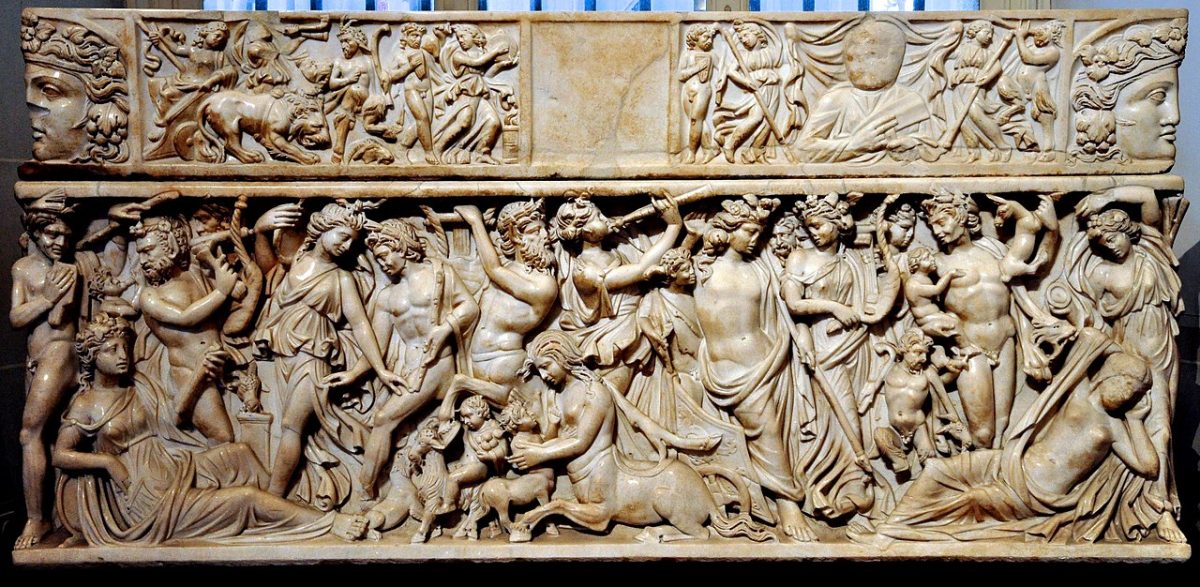
Introducing Ariadne, the daughter of Minos and Pasiphaë
Ariadne was the daughter of Minos and Pasiphaë. Her legend includes love, abduction, and marriage. However, it also includes the deaths, of herself and the child she was never able to give birth to.
Her story is reminiscent of Medea, her mother’s niece. Both fell in love with a stranger, helped him by interfering with the father’s will and violating the father’s plans, eloped with him, killed or helped to kill the brother (Medea killed Absyrtus, Ariadne helped to kill her half-brother Minotaur), betray the paternal house as a whole, to finally be abandoned by the stranger.
Ariadne, in love with the young Athenaeus, gave him a thread to untangle him, as he entered the shelter of the Labyrinth, and then, caught the thread again and gathered the skein to find himself at the exit and not get lost. It is said that the myth was given to her by Daedalus and for that, she was punished by Minos.
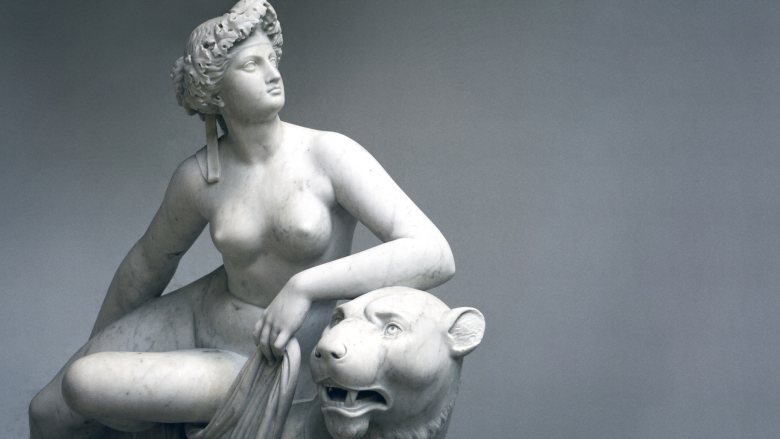
The Legend of Ariadne
So, according to tradition, the hero Theseus, after killing the Minotaur, was returning from Crete to Athens with Ariadne, the daughter of Minos and Pasiphae, who had taken her with him to marry her and avoid the girl from the anger of Minos. However, at the first stop of his journey to Naxos, he left her on the island, while he was sleeping, either because he loved another woman because the Moires decreed it, or because the gods demanded it, especially Dionysus who saw her and fell in love with her.
Ariadne’s sadness when she woke up and saw the ship of the traitorous lover in the distance did not last long. Dionysus arrived with his escort in a chariot pulled by panthers. According to the poet Hesiod, Ariadne was the immortal and ageless wife of Dionysus who raised her to Olympus. At their wedding, she was given a wreath made of flowers, mainly with a flower with an apple-like blossom.
According to others, the diadem given to her by Dionysus or by Aphrodite and the Horae was gold, the work of the craftsman god Hephaestus. Based on others, the wreath was Cretan and Ariadne had brought it with her when she left Crete with Theseus. She had given it to Theseus to shine in the darkness of the Labyrinth when he fought the Minotaur. This wreath was placed by the gods in the sky to shine eternally.
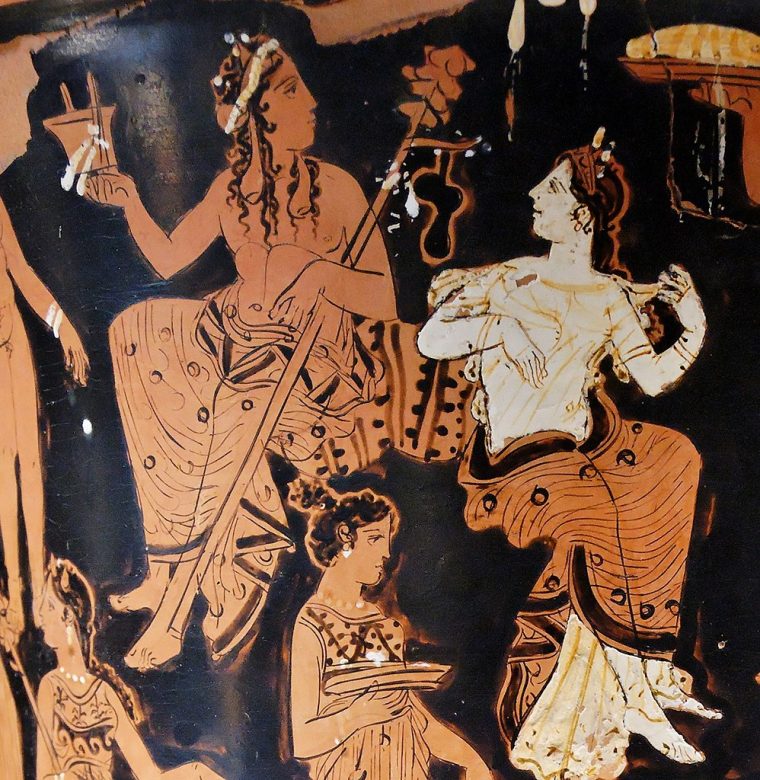
Dionysus and Ariadne Photo Credit: File:Dionysos Ariadne Louvre CA929.jpg
The Legend of Ariadne according to Athenaeus
According to Athenaeus, the island where Theseus abandoned Ariadne was Zeus, north of Crete. It was there that Dionysos claimed it from the sea god Glaucus, whom he tied by the hands and feet with vines. He only released him when he revealed to him his origin from Anthidona, opposite Euboia.
Another tradition wants Artemis to kill Ariadne on the island of Zeus (later identified with Naxos) by order of Dionysus. Or to die on the island of Cyprus, which with a thousand forces, due to rough seas, approached the ship of Theseus. There he landed the pregnant Ariadne who died without giving birth to their child.
Her tomb was shown in various cities, for example in Argos, where there was a temple of Cretan Dionysos and Aphrodite, whose statue Ariadne had given to Theseus who dedicated it to the sanctuary of Delos. When they renovated the temple of Dionysus in Argos, they found an urn with the ashes of Ariadne.
Festivals involving Ariadne
In Knossos, Daedalus had built a marble choir where Ariadne and her friends danced a circular dance invented by Daedalus for Ariadne during the great festivals of the year.
At Delos boys and girls danced an elaborate dance invented by Theseus. They danced along with the young men and women saved from the Minotaur. Inscriptions from Delos refer to ropes held by dancers at the festivals of Aphrodite and Artemis. Apparently, it was a wedding dance in honor of the marriage of Theseus and Ariadne. Or, it was commemorating rites of passage for the transition from adolescence to adulthood. The dance was abandoned at the time of Lucian.
Thoas, Staphylos, Oenopion, Peparithos were the children she had from Dionysos, who became resident heroes spreading the technique of viticulture and the Dionysian cult.
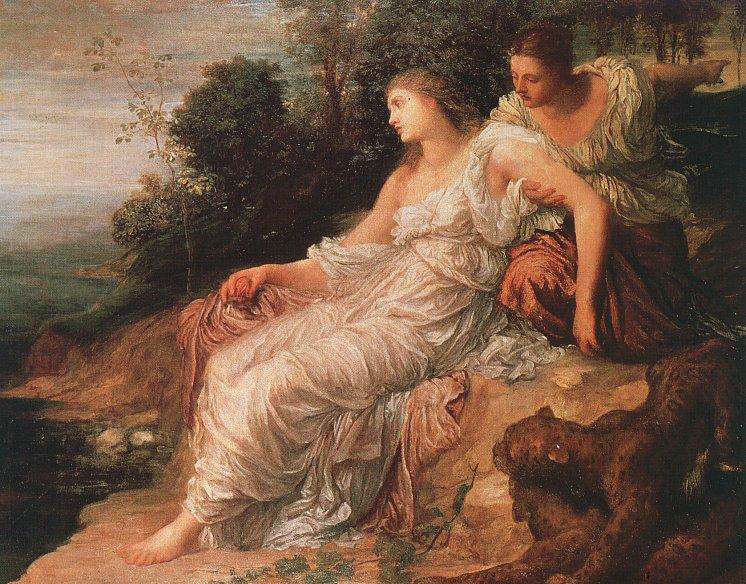
Ariadne on the Island of Naxos Photo Credit: Art Gallery ErgsArt – by ErgSap
The Nature of Ariadne
If we want to trace the nature of Ariadne, we should take into account the interpretation that Hesychius gives to her name. Her abductions by Theseus and Dionysus reflect rituals of a sacred fertile marriage of a vegetative deity with the priest of her cult and the ecstatic ritual dance in Daedalus‘ choir. Moreover, the two festivals with which she was worshiped in Naxos. One mournful, commemorating her death, and the other joyful, commemorating her union with the god Dionysus. Those refer to a dying vegetative deity that is reborn every year.
In addition, we should also look for the deities involved in her myth, Artemis and Aphrodite. Artemis killed her at Naxos either because she did not preserve her virginity. Either hers or Dionysus’s. Aphrodite consoled her after Theseus fled, telling her that she would deserve to be Dionysus’s wife. Therefore, we can conclude that the Minoan Ariadne was a goddess who was replaced by Olympian goddesses.
Furthermore, the pairing of Dionysus and Ariadne commemorates the pairing of similar cults in the Cyclades and the Aegean, while their children spread viticulture and Dionysian worship and the settlement policy of Crete. The goddess has connections to the cycle of life: vegetation, fertility, and renewal of life. Her worship existed before Ariadne’s union with Theseus and also has connections to the cycle of life. In Knossos, during the great festivals of the year, they danced a circular dance. Invented by Daedalus for Ariane in the marble choir that the Athenian architect built for the girl. At Delos boys and girls danced an elaborate dance probably invented by Theseus. They danced along with the young men and women saved from the Minotaur.
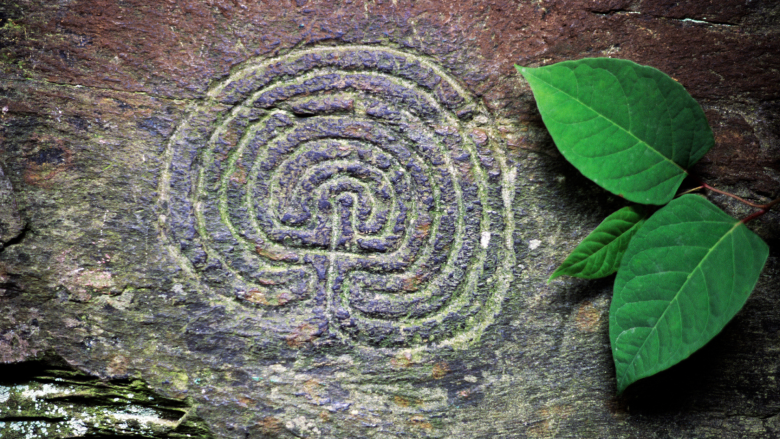
Elissos Mythology Blog Articles
Cretan Myths and Legends on the Births of Zeus, Minos, and the Minotaur
In this article, we will focus on telling the stories of how Zeus, Minos, and the Minotaur were born on the sacred island of Crete.
Furthermore, we will suggest tours that have links to each one of these myths. Therefore, you can experience the legends through the actual locations where they took place.
Many of the most fascinating Greek myths have their origins in Crete. During the heyday of the Minoan Civilization, Crete emerged as a dominant naval power in the Mediterranean, spreading the first great European civilization.
We have evidence that Crete was also the birthplace of three mythological figures. Zeus, Minos, and the Minotaur. Let’s begin to unravel these stories by starting with the God of all Gods, Zeus.
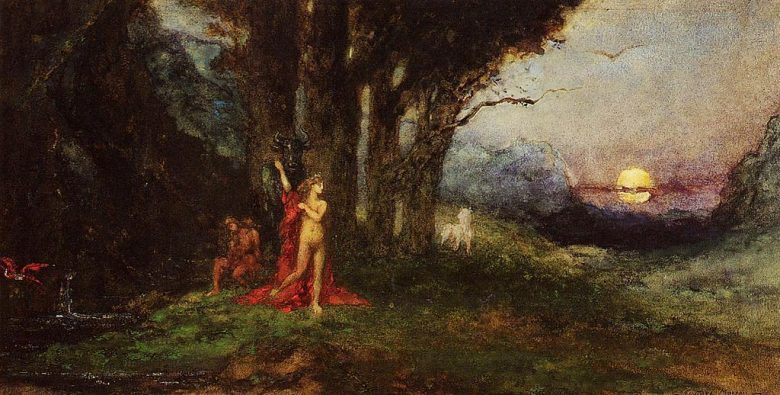
moreau_pasiphae_bul_1880 Photo Credit: Art Gallery ErgsArt – by ErgSap
The Unknown story of Pasiphaë
Pasiphae is the daughter of Helios and Perse, the sister of Perses and Aeetes, the king of Colchis, the sister of the witch Circi, and the wife of Minos.
Her story is connected to her illegitimate and unnatural love for the bull that Poseidon emerged from the sea, a sign of the gods’ preference for Minos in the dispute he had with his brothers Radamanthis and Sarpedon for power. However, while this act of Poseidon secured power to Minos without bloodshed, Minos did not sacrifice the animal. Even though that is what he had promised. On the contrary, he sent it to his flocks because of its beauty and to preserve its race.
